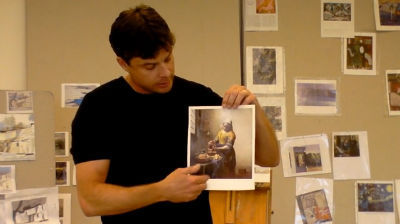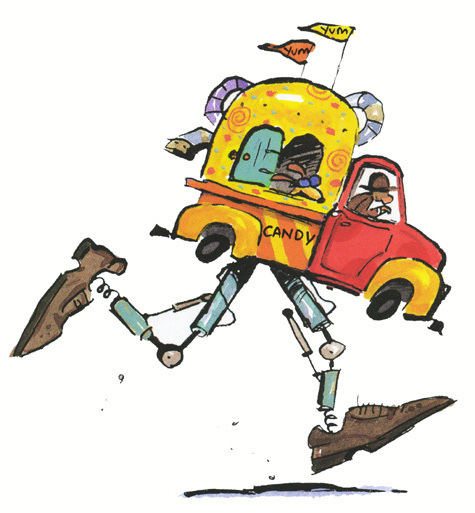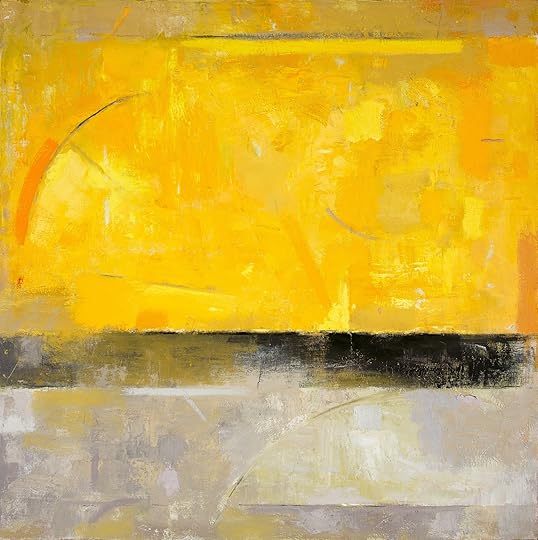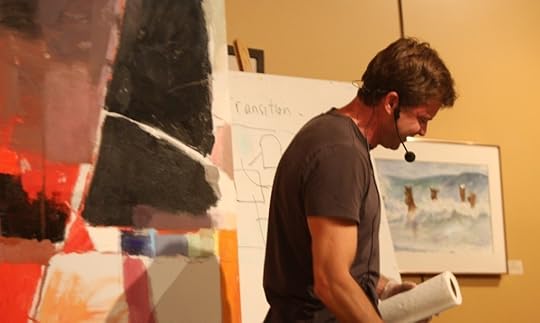David Slonim's Blog
April 11, 2016
Advice to An Aspiring Children’s Illustrator
The following is an interview with an art student at the Academy of Art University in San Francisco, CA majoring in Illustration:
1. What specific skills (Artistically) in your opinion do you find most essential for your success in illustrating children’s books?
Empathy. You have to genuinely love people and be able to put yourself in their shoes. The ability to tap into universal human experience is a gift. If you have it, it needs to be nurtured, coached and developed. Find role models, mentors and peers who can help you grow. Read poetry and good stories and look at great works of art that move you and make you want to go create stuff.
You have to love sequential story telling, with an understanding of how images contribute to character and story apart from the text.
You need to be able to identify the emotional tone of the story and create art that enhances it.
Technically, you need to be able to draw — the ability to create a unified visual world with its own internal logic. It may be whimsical, serious, abstracted or realistic, but it needs to be visually unified and compelling to look at.
Be willing to work hard, trying multiple solutions for any given image. Most of my images involve 10-30 sketches, not counting black and white miniature paintings and mini color paintings before going to final art. Like a film director doing multiple takes of a scene and then choosing the best, we also need to do the hard work of finding the best solution.
I’m reading a book by Leonard Bernstein which has a chapter explaining Beethoven’s methods. Beethoven would try up to 20+ versions of a given passage of music before settling on the right answer. Bernstein’s point was that the quality of “inevitability” which characterizes Beethoven’s music was something he paid for with sheer perseverance.
The same is true of Andrew Wyeth, Edward Hopper, and many, many other master painters. They did countless studies in preparation for the final statement. Most of art making is this kind of digging for gold. The greats don’t just sit down and bang out a great image. They work for it.
2. What specific skills (Business Related) in your opinion do you find most essential for your success in illustrating children’s books?
Never miss a deadline. EVER. Be easy to work with. Take feedback like a grown-up – grateful that the art director or editor want to help you excel. The story is king.
If it serves the story, do it. Success in business is at least 80% working well with people. Be kind, express gratitude, be reliable, be friendly. And do good work.
3. What affiliations and/or organizations do you find the most prominent and beneficial to the children’s book illustrator?
Building relationships is the key to success. People need to know you, like you, and trust you. Face to face is best, when possible. The Mazza Museum has annual Fall and Spring conferences where top talent shares insights and where relationships are formed. SCBWI has local chapters with member meetings and events.
4. Do you attend conventions and/or conferences regularly? Which do you find the most beneficial for yourself and the aspiring children’s book illustrator?
The Mazza Museum conferences have been very helpful.
5. What ways of self promotion have you found to be the most successful?
My web site, blog, Facebook page, and speaking engagements are the main things I do to promote what I do.
6. What is the competitive price range for the work of children’s book illustrators?
It varies widely depending on experience, reputation and track record. You normally get an advance against royalties, with a royalty of 5% of retail (artist only) or 10% of retail (author/ illustrator). If the book earns back the advance, you then earn royalties.
7. What methods are used to calculate the prices?
They will tell you what they are offering. If you need the money, say yes!
On a few contracts recently I have asked for a little more than they were offering.
8. Do you have any advice, thoughts or insights for the aspiring children’ book illustrator?
Expect rejections. Work hard. Experiment a lot. Figure out what you most enjoy doing. Make the work only you could have made.
You will probably need another source of income. Maybe for a while, maybe forever. You never know.
But if you are doing books because it’s what you were born to do, that’s not important. What’s important is that you dig around in your own soul, find the gems down there, and get them out into books for other people to enjoy.
Children’s books create an opportunity for children and their parents and grandparents to come together and make memories that will last a lifetime. It’s an incredible privilege to be invited into a child’s world that way.
 This is me reading to my daughter when we were both a lot younger. :o)
This is me reading to my daughter when we were both a lot younger. :o)

Breaking in to the Children’s Book Market
Breaking In to the Children’s Book Market
Aspiring children’s book authors often ask how to break in to the business. Here are a few thoughts from one guy’s perspective:
Do I need to submit illustration samples with my story? Short answer: No.
Children’s books all begin as manuscripts (a type written story) which are submitted to the editor at a publishing house. Once the editorial staff decides to buy the rights to publish the story, it is the publishing house that seeks and hires an illustrator. Not only is it not necessary to submit illustrations along with a manuscript, I’ve been told it can even be a negative in the eyes of the publisher. It might be perceived as unprofessional, in large part because they see their role as pairing art and text to match their vision for the book.
How do I get names and addresses of decision makers?
Short answer: Research.
Submitting stories to publishers is relatively simple. You need to research which publishers would be most likely to want your story, then find the name(s) of the specific editor(s) you will be submitting to, mail the story to them, and as a professional courtesy, indicate in your cover letter whether you are submitting simultaneously to other publishers.
Resources to help in your research:
Your public library. Tell the reference librarian what you need, they will be happy to help.
The Society of Children’s Book Writers and Illustrators (SCBWI) Check out their advice on getting started: http://www.scbwi.org/Pages.aspx/Just-Getting-Started
The Children’s Book Council (NY) – they have a downloadable mailing list of editors and publishers
PictureBook.com links to resources and info
Jane Yolen’s web site – advice to writers
Conferences? Short answer: Yes.
There are conferences an aspiring author should probably go to if they are serious about a career as a children’s author. Business success boils down to relationships in the end. Face to face contact is one great way to build those relationships. The more people you know on the “inside,” the more likely you are to be invited in. Check out:
the children’s book conference in Chautauqua, NY,
the Highlights Foundation conference
Mazza Museum, University of Findlay, OH
At these events and many others like them, established authors, editors, and publishers give workshops and critiques to up and coming authors. People will be the key to your success.
Get to know them.
Is writing children’s books easy? Short answer: No.
Writing for children is as difficult as writing for adults, if not more so. The tight constraints of the form require an economy of language and expression that take time to master. Continuous effort to improve as a writer is vital to anybody who is in this line of work.
Writing for children is also extremely competitive, as much or more than for any other market. So rejection is part of the children’s writer’s life. In addition, the recent turmoil in the economy has not left children’s publishing untouched. The reality is that they are buying less than before.
I’m just pointing out the obvious — this is not an easy path, whether you are trying to break in or whether you are trying to stay in.
Will you illustrate my story? Short answer: No. It’s not necessary.
An illustrator is hired by a publisher. If your story is good enough to get published, you won’t have to find an artist. The publisher will. It’s their job, not yours.
Can you help me get published? Short answer. I’m sorry, but I can’t.
There are gatekeepers and those who are knocking on the gate. I’m not a gatekeeper. I have no decision-making power or influence over what publishers choose to publish. (I wish I did sometimes!) So I have no inside track to getting somebody else published. We’re in the same boat as far as that goes.
I hope this helps in your journey.
Whatever happens, keep writing!
Here’s the link again to info from the Society of Children’s Book Writers and Illustrators on getting started: http://www.scbwi.org/Pages.aspx/Just-Getting-Started

April 7, 2016
Muriel Guepin Gallery | Heat Wave
40 x 40
2016
oil on linen
SOLD
New York, NY
Muriel Guepin Gallery began representing my work in January 2016.

March 23, 2016
School Visit- Waterville Primary
I had a great time with the students at Waterville Primary School in Waterville, OH this week.
To schedule a school visit with David Slonim, contact the studio: david@davidslonim.com
 more info on David’s school visits here
more info on David’s school visits here
For my drawing demos, the students tell me what to draw. They invent a character, tell me what problem the character is having, and an emotion the character is feeling. I draw the image in a few short minutes, then three kids help me color it.
In this case, it’s a unicorn farting rainbows while her friend Frog gags:
Another drawing demo- a harp seal and a one-eyed dinosaur in UFOs, shooting lasers at each other:
We talked about nostrils, perseverance, determination and being willing to keep trying until it’s right.
Authors and illustrators traditionally sign the library wall…
Thanks for a great visit, Waterville Primary!
To schedule a school visit with David Slonim, contact the studio: david@davidslonim.com

December 2, 2014
Spring 2015 Painting Workshop
Meeting every other WEDNESDAY
10 am – 3 pm
Anderson, Indiana
30 hours of instruction | 6 sessions
March 4, 18, April 1, 15, 29, May 13

Regular Tuition Fee is $690.00 *
Full payment secures your place in the group.
* EARLY REGISTRATION DISCOUNT!
Pay in full by DECEMBER 24: $635.00
Save More- Bring a friend (first time student): $517.00 25% OFF
contact the studio by email to register: david@davidmichaelslonim.com
YOU CAN PAINT BETTER THAN YOU THINK YOU CAN.
This course will emphasize:
1) Quantity of work
To produce good work we must produce a lot of work.
2) Building on your personal strengths as an artist
Paint YOUR paintings the way ONLY YOU can paint them.
3) Setting goals and planning action steps to meet them
We’ll talk about about how to get there from here.
GOOD NEWS: YOU HAVEN’T DONE YOUR BEST WORK YET!
We will also discuss what I’ve been learning about
Finding your audience:
marketing insights,
web site design,
juried shows,
galleries
PAINTING DURING CLASS TIME | POWER POINT PRESENTATIONS | CRITIQUES | DEMOS
– You will decide what to paint (you can work from photos, sketches, plein air paintings, or still life objects.)
– You will decide how you want to paint. (representational, abstract, tight, loose… the goal is to be yourself)
FEEDBACK from artists who have studied with David:
“The best workshop I’ve ever taken.” – J.K.
“You are very encouraging. I appreciate the tone you set and the atmosphere.” -J.D.
“Strengths as a teacher: intelligence, hard work, sense of humor, humility.
I told Bonnie on the last day of class that I feel very lucky to study with you.” – L.W.
“The strength of the design and composition in these classes has not been equaled or even approached in other classes and workshops I’ve taken.” – G.H.
“I have been so hungry for the information that you are sharing. You are a fun teacher and
you give so much. Without a doubt you have been the best art teacher I
have ever had. “ – J.L.
“Dude, you are seriously bending my mind.” – P.K.

November 20, 2014
I KNOW AN OLD LADY Chanukah Poster
October 9, 2014
Demo at Hamilton Co Art Association
I had a great time talking art and smearing paint with this friendly and funny bunch. They got me laughing so hard I could barely paint.
Thank you, Judy Weiss for setting this up. Thank you to Larry and Steve for all the technical and logistical help.

September 25, 2014
The Eye is Hungry for Shapes…Feed It!
September 22, 2014
Modulation No. 1 | 48 x 36
September 15, 2014
Build Your Pyramid
I used to feel guilty for not finishing most of my ideas. Not anymore. I’ve leaned that having more ideas than I have time to finish is not a weakness, it is a strength. An artist should be creating a small mountain of unfinished ideas, half-baked attempts & false starts, abandoned projects, screw ups and do-overs. I created the pyramid doodle to remind myself. I’m sharing it here in case it may encourage you, too.
“The best way to have a good idea is to have a lot of ideas.”
- Linus Pauling (1901-1994, American Chemist, Bio-Chemist, Nobel Laureate)
From the pile of ideas, we select the best ones to experiment with.
From the pile of experiments, we choose the strongest results to refine.
From those come the small number of works anybody will ever see.
The viewer will never know what it took to produce the work they see, but I’m confident that they will sense the honesty in it and feel respected.
To paint better
PAINT MORE.

David Slonim's Blog
- David Slonim's profile
- 25 followers

































